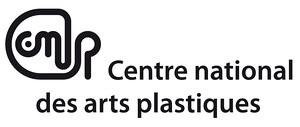189, rue d’Aubervilliers
CAP 18
75018 Paris
France
In 2017, the Cnap launched its third annual round of application projects for curatorial scholarships. These grants aim at promoting research on specific artworks in its collection. The diversity of applicants attests of the international dimension of this year’s selection. Furthermore, the applicants’ projects challenge the institution yearly by critically analysing contemporary history of art.
Although this project is still experimental, it successfully displays the Cnap’s intention to provide a better understanding of its collection. It also demonstrates how the institution seeks to turn their collection into key resources for professionals, while supporting the research of independent curators.
Four projects have been selected:
Theatre of Operations, Phase III: Fine Arts Division by Bénédicte le Pimpec and Émile Ouroumov, in collaboration with Céline Bertin
“The project is part of the ‘Theatre of Operations’ curatorial platform which analyzes the zones of exchange and confrontation that exist between various practical and theoretical models.
Empirical, applied and situated, this research considers the sociopolitical content and curatorial issues of a specific body of artworks from the collection of the Cnap since its origins in 1791, notably in terms of their functions and use values. Focused on works on long-term loan in various political, administrative or educational French institutions, the research analyzes the context, the conditions of public access, how the artworks are perceived, as well as the modalities of their in situ exhibition.”
La collection du Cnap à l’aune du queer (Queer tracings through the Cnap collection) by Antony Hudek
“This project is concerned with tracing queer affective and historical networks between artworks from the 1960s to today in the Cnap’s collection. ‘Queer’ in the context of this research qualifies any position skewed with respect to sexual, social and political heteronormativity. Some of the selected artworks focus on the representation of bodies that play with aesthetic conventions which favor the heterosexual subject. Others introduce a queer sensitivity and performative potential that deviate from generic binary codes (man/woman, parent/child, but also subject/object and human/non-human).”
Algérie: creux de mémoire, traces d’archives (Algeria: memory lapses, archival traces) by Natasha Marie Llorens
“The project is focused on artists in the Cnap collection who identify as Algerian, because they were born and lived in Algeria their whole lives or went into exile late in their careers. A second question concerns the pieds-noir artists in the collection. What kind of pictures do they make? Are these pictures of Algeria, and if not, what are they? The proposed research reads the Cnap collection towards an answer to this question: what does the French national collection render visible about the post-colonial relationship between France and Algeria?”
Hors-sol: formes en exil dans la Collection du Cnap (Off ground: forms in exile in the Cnap collection) by Estelle Nabeyrat and Pedro de Llano
“The starting point for this research is the attention shown by the institution for foreign artists. Noting that the Cnap’s inventory of artworks has given rise to a significant number of artists with multiple nationalities (whether resident in France or elsewhere) including those who are stateless and or migrant, we endeavored to take a closer look at the experiences of those artists who find themselves in exile.”



